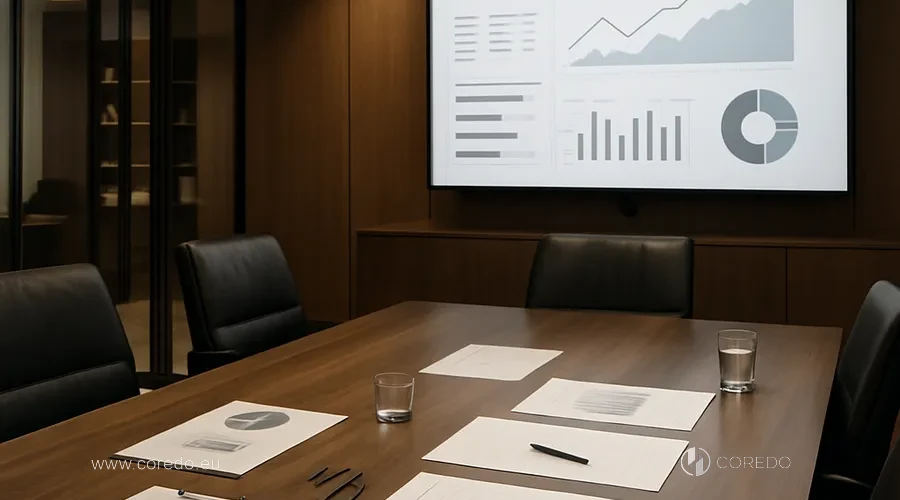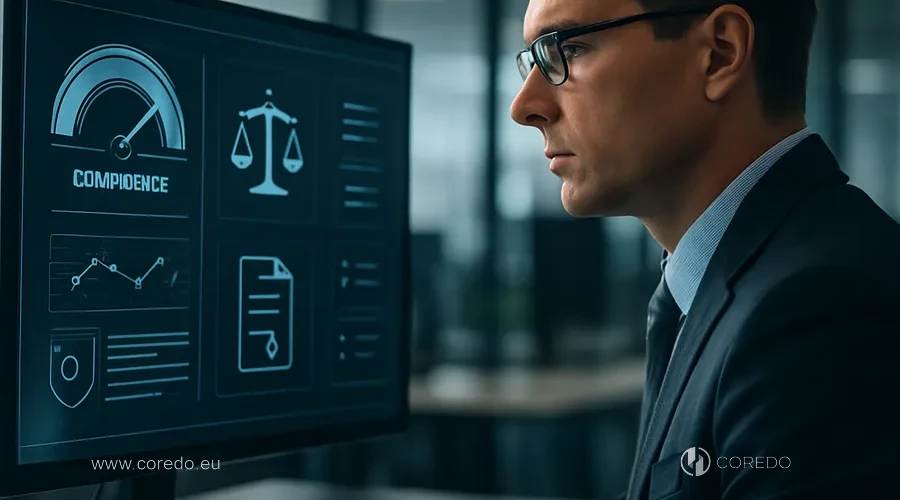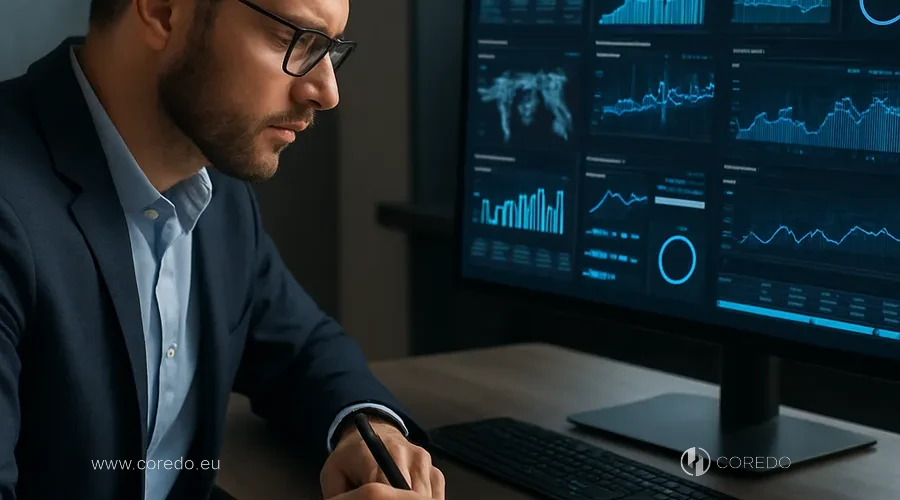Nikita Veremeev
22.11.2025 | 6 min read
Updated: 22.11.2025
ZISIF §15 is a special regime provided for by the Czech Investment Funds Act (240/2013 Sb.) that allows the creation of alternative investment funds (AIF) with a unique combination of flexibility and regulatory transparency. Unlike traditional funds, ZISIF §15 makes it possible to shape the fund’s corporate structure to the needs of a specific investor, whether a family office, a holding, or a venture platform.
A feature of ZISIF §15 is that it does not require obtaining a full AIFM manager license if the fund serves a limited circle of investors and does not carry out public capital raising. This significantly simplifies the launch of an investment company in the Czech Republic, reduces compliance costs, and speeds up the fund’s integration into international holding structures.
Implemented projects show: ZISIF §15 is becoming the optimal tool for structuring international investments, especially in cases where a balance is required between asset protection, tax optimization, and compliance with European transparency standards.
Corporate Structure and Asset Management

The key to a fund’s efficiency under ZISIF §15 – a properly structured corporate structure. In practice, two main forms are used: s.r.o. (limited liability company), optimal for family offices and small investment groups, and joint-stock company (a.s.), suitable for large projects with a diversified asset portfolio and the involvement of institutional investors.
Asset management is built on the principles of fiduciary responsibility: appointment of a professional director or management company, clear separation of control and decision-making functions, regular investment reporting. In each case, individual management mechanisms are developed, taking into account AML compliance requirements for funds and international standards of investment transparency.
Important aspect – maintaining investment reporting. Automation of reporting processes and integration of digital solutions in fund management not only reduce operational risks but also increase trust from investors and banks.
Structuring international investments through ZISIF §15

ZISIF §15 opens broad opportunities for tax optimization of investments and asset protection through a fund. Thanks to the features of Czech legislation and double taxation avoidance agreements, such funds can be easily integrated into international holding structures, providing flexibility and transparency for beneficiaries.
The solutions allow for taking into account CFC rules (controlled foreign companies), features of beneficial ownership and disclosure requirements. This is critically important for investors from the EU, Asia and the CIS who face tightening tax and financial controls in their jurisdictions.
ZISIF §15 is also effective for diversifying an investment portfolio: through the fund one can invest in a wide range of assets. This approach includes traditional financial instruments (stocks, bonds, derivatives), real estate and infrastructure projects, startups and venture investments, cryptocurrencies and digital assets (provided AML compliance is observed), as well as structuring family and corporate capital.
ZISIF Section 15 for family offices and investors

ZISIF §15 is a unique tool for family offices focused on protecting family wealth and managing legacy. Unlike traditional trust structures, a Czech investment fund allows integration of family and corporate capital, providing flexibility in management and transparency for future generations.
Using ZISIF §15 to manage legacy and diversify assets not only reduces the tax burden but also ensures continuity in investment management. The fund can invest in real estate, venture projects, infrastructure, digital and biotech assets, which is especially important for families with a global presence.
For institutional investors and corporations, ZISIF §15 becomes a platform for implementing complex investment strategies: integrating the fund into a holding, risk management, and using international financial instruments. This approach provides scalability of the fund structure with the possibility of attracting new investors (up to 20 non-qualified or an unlimited number of qualified), as well as simplicity of corporate governance, whereby founders can use an s.r.o. or a joint-stock company while retaining control over the fund and profit distribution.
Legal and compliance risks when using ZISIF

Failure to comply with laws and AML compliance requirements when working with funds under ZISIF §15 can lead to serious legal and financial risks: from fines and account freezes to the loss of an investment license. That is why special attention is paid to legal support for projects and the implementation of effective internal control systems.
Key recommendations for investors include conducting regular checks of beneficial ownership and compliance with CFC rules, automating investment reporting and transaction monitoring processes, using digital solutions for risk management and ensuring transparency of operations. Only a comprehensive approach to legal support, integration of AML compliance and continuous monitoring of regulatory changes can minimize risks and ensure the fund’s long-term sustainability.
Practical steps for creating and managing ZISIF §15

Document preparation begins with developing the fund’s investment strategy and defining the corporate structure. It is necessary to prepare the founding documents, including the articles of association, internal regulations, and agreements between the founders. The ownership structure and allocation of shares must be defined taking into account requirements for beneficial ownership and fiduciary management. A detailed business plan for the investment fund is also required, describing the investment strategy, target assets, and return scenarios for PRIIPs, as well as a list of founders and beneficiaries with verification of sources of funds.
Fund registration involves submitting documents to the competent authorities, appointing a director and, if necessary, an asset management company in the Czech Republic, and opening a corporate account in a Czech or European bank.
Management organization includes implementing AML compliance procedures and ensuring process transparency with regular reporting to investors.
Integrating the fund into a holding involves structuring ownership and integrating with international financial instruments taking tax treaties into account.
Control and reporting include automation of investment reporting, regular audits, and providing transparent information to investors and regulators.
Main findings and recommendations
The use of ZISIF §15 for international investments is a strategic tool for asset management, tax optimization and capital protection on a global scale. A properly structured ZISIF §15 fund enables the pooling of family and corporate capital, the implementation of complex investment strategies, and the provision of transparency for investors and regulators.
It is recommended that entrepreneurs and investors from Europe, Asia and the CIS consider ZISIF §15 as part of a comprehensive approach to international investments. It is important to ensure professional legal support, the integration of AML compliance and continuous monitoring of regulatory changes at all stages – from fund design to its integration into global investment strategies.
Comparative table of investments under ZISIF §15
| Investment type | Advantages through ZISIF §15 | Management and taxation features |
|---|---|---|
| Real estate | Asset protection, tax optimization | Requirement for valuation and reporting |
| Startups and venture projects | Diversification, access to innovation | High risks, long-term strategies |
| Infrastructure projects | Stable income, government support | Complex legal procedures |
| Crypto assets and digital assets | Flexibility, new markets | Special AML and regulatory requirements |